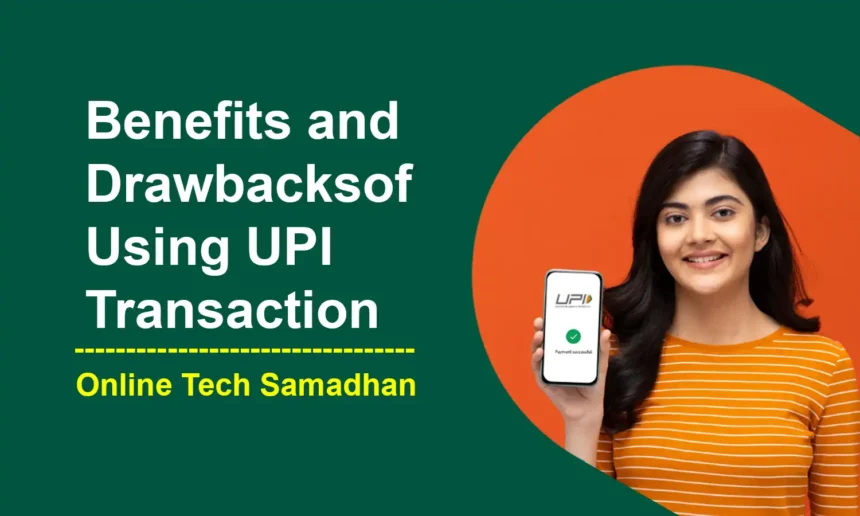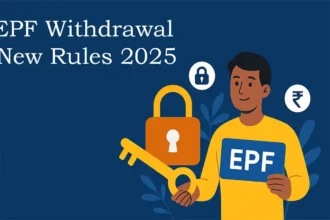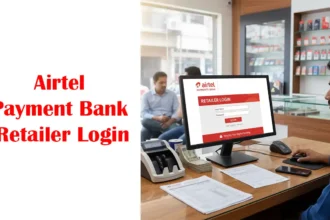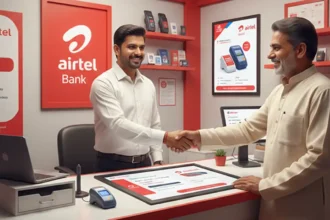Do You Know What the Benefits and Drawbacks of Using UPI?
क्या आपने कभी सोचा है कि पैसे भेजना, बिल चुकाना या दोस्तों के साथ खर्च शेयर करना कितना आसान हो सकता है? UPI (Unified Payments Interface) के माध्यम से आप यह सब और भी बहुत कुछ कर सकते हैं! UPI एक डिजिटल एडवांस्ड तकनीक है, जिसने भारत में डिजिटल पेमेंट्स करने के तरीके को पूरी तरह बदल दिया है। यह आपको आपके सभी वित्तीय लेन-देन को तेज़ी और आसानी से मैनेज करने की सुविधा देता है, वह भी सीधे आपके स्मार्टफोन से।
लेकिन किसी भी नई प्रणाली की तरह, UPI के भी कुछ चुनौतियाँ और सीमाएँ हैं। इस लेख में हम Benefits and Drawbacks of Using UPI के बारे में विस्तार से जानेंगे। तो तैयार हो जाइए UPI की अद्भुत सुविधा को समझने और इसके जटिल पहलुओं को जानने के लिए। यह समय है इस इनोवेटिव पेमेंट सिस्टम को अपनाने और अपने डिजिटल लेन-देन को एक नई ऊँचाई पर ले जाने का!
What is UPI?
UPI को आप अपने बैंक अकाउंट्स के लिए एक डिजिटल एड्रेस बुक की तरह सोच सकते हैं। लंबे अकाउंट नंबर और जटिल कोड्स से निपटने के बजाय, UPI एक सरल ID का उपयोग करता है, जैसे: “sameer123@upi”।
यह ID आपके बैंक अकाउंट से लिंक होती है, इसलिए जब आप ऑनलाइन पैसे भेजना चाहते हैं, तो आपको केवल अपने दोस्त का UPI ID और अपना UPI PIN (ATM PIN जैसा कोड) चाहिए।
यह कुछ ऐसा है जैसे आपके पास एक खास शक्ति हो, जो आपको पैसे भेजने और प्राप्त करने में आसानी और तेज़ी देती है।
UPI के माध्यम से ऑनलाइन मनी ट्रांसफर करने के फायदे (Benefits of Using UPI for Online Money Transfers)
UPI (Unified Payments Interface) भारत में डिजिटल भुगतान का एक अत्यंत लोकप्रिय और सुविधाजनक तरीका है। इसके उपयोग से पैसे ट्रांसफर करना आसान, तेज़ और सुरक्षित हो गया है। नीचे UPI इस्तेमाल करने के मुख्य फायदे दिए गए हैं:
1. आसान और उपयोगकर्ता-मित्रवत (Easy to Use)
- UPI का इंटरफेस बहुत सरल और उपयोगकर्ता-मित्रवत है।
- सिर्फ कुछ टैप्स में आप किसी को भी तुरंत पैसे भेज सकते हैं।
- किसी भी बैंक के लिए अलग-अलग ऐप डाउनलोड करने की जरूरत नहीं होती।
2. तुरंत लेन-देन (Fast Transactions)
- UPI के माध्यम से ट्रांजैक्शन तुरंत हो जाता है।
- पारंपरिक बैंकिंग की तरह घंटों या दिनों तक इंतजार करने की जरूरत नहीं होती।
- पैसे तुरंत प्राप्तकर्ता के बैंक अकाउंट में पहुँच जाते हैं।
3. चौबीसों घंटे उपलब्ध (Available Anytime)
- UPI 24/7 उपलब्ध है, यानी आप कभी भी पैसे भेज या प्राप्त कर सकते हैं।
- सप्ताहांत या छुट्टियों में भी लेन-देन किया जा सकता है।
- यह सुविधा उन लोगों के लिए उपयोगी है जिन्हें आपातकालीन ट्रांसफर करना होता है।
4. कई बैंक अकाउंट का एकीकरण (Multiple Bank Account Integration)
- एक ही UPI ID से आप कई बैंक अकाउंट लिंक कर सकते हैं।
- अलग-अलग बैंक ऐप्स का इस्तेमाल करने की जरूरत नहीं होती।
- यह आपके फाइनेंस मैनेजमेंट को सरल और सुविधाजनक बनाता है।
5. सुरक्षित लेन-देन (Secure Transactions)
- UPI में मजबूत सुरक्षा उपाय लागू हैं।
- इसमें टू-फैक्टर ऑथेंटिकेशन, पासवर्ड और एन्क्रिप्टेड डेटा ट्रांसफर जैसी सुरक्षा तकनीकें शामिल हैं।
- यह आपके पैसों और ट्रांजैक्शन की सुरक्षा सुनिश्चित करता है।
6. कोई अतिरिक्त शुल्क नहीं (No Additional Charges)
- UPI के माध्यम से अधिकांश पीयर-टू-पीयर (P2P) ट्रांसफर मुफ्त होते हैं।
- छोटे और मध्यम ट्रांजैक्शन पर कोई अतिरिक्त चार्ज नहीं लगता।
- यह पारंपरिक बैंक ट्रांसफर या IMPS की तुलना में किफायती है।
7. बिल और रिचार्ज का भुगतान (Bill Payments and Recharges)
- UPI के माध्यम से आप बिजली, पानी, गैस, इंटरनेट बिल और मोबाइल रिचार्ज भी आसानी से कर सकते हैं।
- सभी पेमेंट्स एक ही प्लेटफ़ॉर्म से करना संभव है।
8. QR कोड पेमेंट (QR Code Payment)
- UPI QR कोड के माध्यम से दुकानदारों और व्यापारियों को भी पेमेंट कर सकते हैं।
- नकद या कार्ड लेन-देन की जरूरत नहीं होती।
- यह सुविधा छोटे व्यवसायियों और स्ट्रीट वेंडर्स के लिए बहुत उपयोगी है।
9. ट्रांजैक्शन का रिकॉर्ड (Transaction Record)
- UPI ऐप हर लेन-देन का रिकॉर्ड रखता है।
- आप कभी भी अपने ट्रांजैक्शन हिस्ट्री को चेक कर सकते हैं।
- इससे भुगतान का ट्रैक रखना आसान हो जाता है।
10. इंटरनेशनल पेमेंट की संभावना (International Payment Potential)
- कुछ UPI ऐप अब अंतरराष्ट्रीय भुगतान और फंड ट्रांसफर की सुविधा भी दे रहे हैं।
- यह सुविधा विदेश में रह रहे भारतीयों और व्यापारियों के लिए फायदेमंद है।
UPI के माध्यम से ऑनलाइन मनी ट्रांसफर करने के नुकसान
UPI (Unified Payments Interface) भारत में डिजिटल भुगतान का एक लोकप्रिय माध्यम है, लेकिन इसके भी कुछ नुकसान और सीमाएँ हैं जिन्हें जानना जरूरी है।
1. इंटरनेट पर निर्भरता (Dependence on Internet)
- UPI के माध्यम से लेन-देन करने के लिए स्थिर और तेज़ इंटरनेट कनेक्शन आवश्यक है।
- अगर आपका इंटरनेट स्लो या अनविश्वसनीय है, तो पैसों का ट्रांसफर करने में समस्या आ सकती है।
- कई बार नेटवर्क स्लो होने पर लेन-देन फेल या डिले हो सकता है।
2. तकनीकी समस्याएँ (Technical Issues)
- कभी-कभी UPI सिस्टम या सर्वर डाउन हो सकते हैं।
- इस कारण से ट्रांजैक्शन फेल हो सकते हैं या पैसे तुरंत ट्रांसफर नहीं हो पाते।
- यह उपयोगकर्ताओं के लिए असुविधाजनक और तनावपूर्ण हो सकता है।
3. स्मार्टफोन पर निर्भरता (Smartphone Dependency)
- UPI लेन-देन मुख्य रूप से स्मार्टफोन और UPI ऐप्स पर आधारित हैं।
- यदि आपके पास स्मार्टफोन नहीं है या आपको मोबाइल ऐप्स इस्तेमाल करने में परेशानी है, तो UPI का उपयोग कठिन हो सकता है।
- हालांकि, अब कुछ बेसिक फोन भी UPI पेमेंट सपोर्ट करते हैं, लेकिन सभी फीचर्स उपलब्ध नहीं हैं।
4. सीमित स्वीकार्यता (Limited Acceptance)
- UPI अधिकांश जगहों पर स्वीकार्य है, लेकिन छोटे व्यापारियों और स्थानीय दुकानदारों के पास UPI पेमेंट स्वीकार करने के लिए आवश्यक इन्फ्रास्ट्रक्चर नहीं हो सकता।
- ऐसे स्थानों पर कैश या कार्ड पेमेंट की जरूरत पड़ सकती है।
5. ट्रांजैक्शन लिमिट (Transaction Limits)
- UPI में कुछ सीमा निर्धारित होती है, खासकर पीयर-टू-पीयर (P2P) ट्रांसफर के लिए।
- बड़ी राशि के ट्रांसफर या बार-बार लेन-देन करने पर ये लिमिट कुछ उपयोगकर्ताओं के लिए प्रतिबंधात्मक हो सकती है।
6. धोखाधड़ी और सुरक्षा जोखिम (Fraud and Security Risks)
- डिजिटल लेन-देन में फिशिंग, स्कैम और OTP धोखाधड़ी जैसी समस्याएँ हो सकती हैं।
- अगर आपका मोबाइल या UPI अकाउंट सुरक्षित नहीं है, तो पैसे चोरी होने का खतरा रहता है।
- उपयोगकर्ता को हमेशा सावधान रहना और बैंक या NPCI द्वारा बताए गए सुरक्षा उपायों का पालन करना जरूरी है।
7. बैंक सिस्टम पर निर्भरता (Dependence on Bank Servers)
- UPI लेन-देन पूरी तरह से बैंक सर्वरों और NPCI नेटवर्क पर निर्भर है।
- बैंक सर्वर डाउन होने या तकनीकी गड़बड़ी होने पर ट्रांजैक्शन फेल हो सकता है।
8. कस्टमर सपोर्ट की समस्या (Customer Support Issues)
- कभी-कभी UPI से जुड़ी समस्याओं को तुरंत हल करने के लिए बैंक या ऐप का कस्टमर सपोर्ट धीमा या असुविधाजनक हो सकता है।
- गलत ट्रांजैक्शन या पैसे फंसने की स्थिति में मदद पाने में समय लग सकता है।
9. ऑफलाइन लेन-देन में कठिनाई (Difficulty in Offline Transactions)
- UPI मुख्य रूप से ऑनलाइन लेन-देन पर आधारित है।
- अगर इंटरनेट नहीं है या नेटवर्क कमजोर है, तो ऑफलाइन पेमेंट करना मुश्किल हो सकता है।
New UPI Rules and Regulations 2025
2025 में, Reserve Bank of India (RBI) और National Payments Corporation of India (NPCI) ने Unified Payments Interface (UPI) के उपयोग और सुरक्षा को और अधिक मजबूत बनाने के लिए कई महत्वपूर्ण अपडेट किए हैं। ये बदलाव डिजिटल लेन-देन को आसान, सुरक्षित और पारदर्शी बनाने के लिए हैं।
🔐 सुरक्षा (Security) में बदलाव
- निष्क्रिय UPI IDs का निष्क्रिय करना
- एक साल तक कोई लेन-देन न करने वाले UPI IDs और जुड़े मोबाइल नंबरों को निष्क्रिय कर दिया जाएगा।
- यह कदम गलत उपयोग और धोखाधड़ी को रोकने के लिए लिया गया है।
- Payment Aggregators के लिए पूर्ण KYC अनिवार्य
- अब सभी Payment Aggregators को पूर्ण KYC करना अनिवार्य है।
- इससे डिजिटल लेन-देन में पारदर्शिता और वित्तीय अनुशासन सुनिश्चित होगा।
💳 लेन-देन की सीमा (Transaction Limits) में बदलाव
- दैनिक लेन-देन सीमा बढ़ी
- अस्पताल और शैक्षणिक संस्थानों के लिए दैनिक UPI लेन-देन सीमा ₹5 लाख कर दी गई है।
- UPI Lite Wallet सीमा बढ़ी
- UPI Lite Wallet की सीमा अब ₹500 तक ऑफलाइन लेन-देन के लिए बढ़ा दी गई है, पहले यह ₹200 थी।
🕒 लेन-देन समय और AutoPay में बदलाव
- ₹2,000 से अधिक पहली पेमेंट के लिए 4-घंटे की विंडो
- नए रिसीवर को ₹2,000 से अधिक पहली बार भुगतान करने वाले उपयोगकर्ताओं के लिए 4 घंटे की समय सीमा निर्धारित की गई है।
- इस समय में उपयोगकर्ता लेन-देन रिवर्स या संशोधित कर सकते हैं।
- Autopay नियमों में सुधार
- Autopay mandates अब केवल non-peak hours में लागू होंगे और अधिक सुरक्षा सुनिश्चित करने के लिए सख्त वैलिडेशन होंगे।
🛡️ धोखाधड़ी रोकने और पारदर्शिता (Fraud Prevention & Transparency)
- Merchant लेन-देन पर Interchange Fee
- Prepaid Payment Instruments (PPI) जैसे wallets के माध्यम से ₹2,000 से अधिक लेन-देन पर 1.1% Interchange Fee लागू होगी।
- ग्राहक को इस शुल्क का भार नहीं उठाना पड़ेगा, इसे Merchant देगा।
- वास्तविक बैंक खाता नाम का प्रदर्शन
- अब UPI पेमेंट करते समय स्क्रीन पर बैंक खाता धारक का असली नाम दिखाई देगा, जिससे स्पष्टता और सही जानकारी मिलेगी।
📈 नए फीचर्स (New Features)
- UPI for Secondary Market (Beta Phase)
- NPCI ने Beta Phase में UPI for Secondary Market शुरू किया है।
- यह सीमित ग्राहकों को ट्रेड कन्फ़र्मेशन के बाद फंड ब्लॉक करने और T+1 basis पर Clearing Corporations के माध्यम से भुगतान निपटाने की सुविधा देता है।
- UPI-ATM
- Hitachi Payment Services और NPCI के सहयोग से भारत का पहला UPI-ATM लॉन्च किया गया है।
- अब QR code स्कैन करके नकद निकासी की जा सकेगी।
Conclusion:
UPI ने भारत में ऑनलाइन पैसे ट्रांसफर करने के तरीके में क्रांति ला दी है, जिससे लेन-देन करना आसान और तेज़ हो गया है। इसकी यूजर-फ्रेंडली प्रकृति, तुरंत पैसे ट्रांसफर करने की सुविधा और 24/7 उपलब्धता इसे लोगों के बीच बहुत लोकप्रिय बनाती है।
हालाँकि, इसके कुछ सीमाएँ और चुनौतियाँ भी हैं। जैसे कि इंटरनेट कनेक्टिविटी पर निर्भरता और कभी-कभी तकनीकी समस्याएँ होना। इसके अलावा, UPI सभी व्यापारियों द्वारा सार्वभौमिक रूप से स्वीकार नहीं किया जाता।
इन सीमाओं के बावजूद, UPI भारत में डिजिटल लेन-देन को बढ़ावा देने में एक महत्वपूर्ण भूमिका निभाता है। यह ऑनलाइन पैसे ट्रांसफर करने का सुविधाजनक और सुरक्षित तरीका प्रदान करता है और डिजिटल ट्रांज़ैक्शन को अपनाने में महत्वपूर्ण योगदान देता है, हालांकि इसे अभी भी कुछ चुनौतियों से निपटना है।





